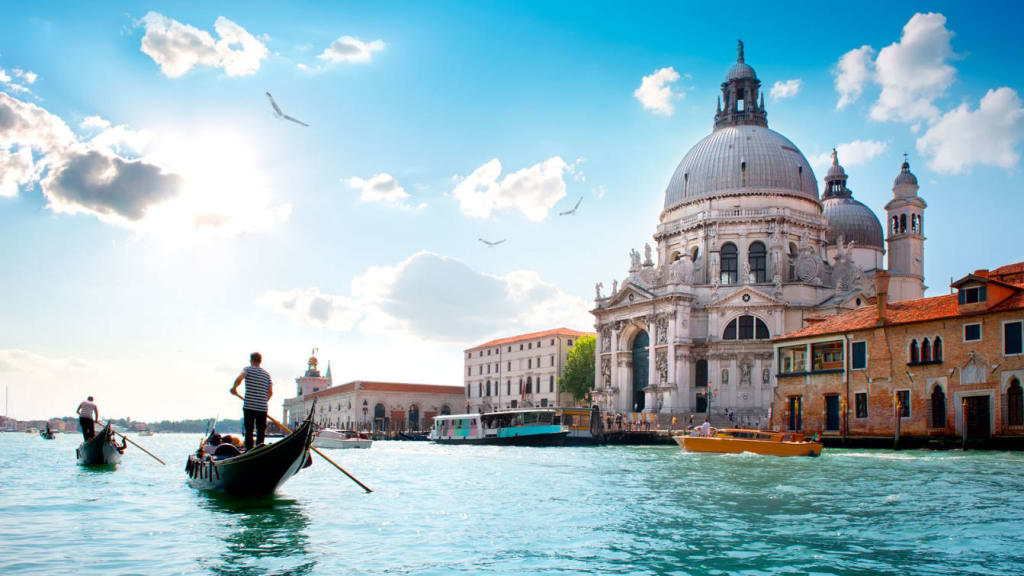
One example of a historical place is the Colosseum in Rome, Italy. The Colosseum, also known as the Flavian Amphitheatre, is an iconic symbol of ancient Rome and is considered one of the greatest works of Roman architecture and engineering. It was built in 80 AD and was used for gladiatorial contests and other public spectacles such as animal hunts and mock sea battles. The Colosseum is a UNESCO World Heritage site and is visited by millions of tourists every year.
History of Italy
The history of Italy dates back to ancient times, with evidence of human presence in the area going back to the Paleolithic period. The early civilizations that developed in Italy included the Etruscans, the Greeks, and the Romans.
The Roman Republic was established in 509 BC, and Rome became the dominant power in the Mediterranean world. The Roman Empire, which was established in 27 BC, controlled much of Europe, North Africa, and the Middle East, and lasted for nearly five centuries.
In the Middle Ages, Italy was divided into several city-states, including Venice, Florence, and Genoa, which were wealthy and influential centers of trade and culture. The Renaissance, which began in Italy in the 14th century, was a period of great artistic and intellectual achievement, and produced such figures as Leonardo da Vinci, Michelangelo, and Galileo.
During the 19th century, Italy was unified under the leadership of Giuseppe Garibaldi, and became a republic in 1946, following World War II. Italy played a significant role in the rise of fascism and the subsequent world wars, which left the country devastated.
In the post-war period, Italy experienced a period of rapid economic growth and social change, known as the Italian economic miracle. Today, Italy is a leading member of the European Union and NATO, and is known for its cultural heritage, fashion, and cuisine.
Visit to Italy
The history of Italy dates back to ancient times, with evidence of human presence in the area going back to the Paleolithic period. The early civilizations that developed in Italy included the Etruscans, the Greeks, and the Romans.
The Roman Republic was established in 509 BC, and Rome became the dominant power in the Mediterranean world. The Roman Empire, which was established in 27 BC, controlled much of Europe, North Africa, and the Middle East, and lasted for nearly five centuries.
In the Middle Ages, Italy was divided into several city-states, including Venice, Florence, and Genoa, which were wealthy and influential centers of trade and culture. The Renaissance, which began in Italy in the 14th century, was a period of great artistic and intellectual achievement, and produced such figures as Leonardo da Vinci, Michelangelo, and Galileo.
During the 19th century, Italy was unified under the leadership of Giuseppe Garibaldi, and became a republic in 1946, following World War II. Italy played a significant role in the rise of fascism and the subsequent world wars, which left the country devastated.
In the post-war period, Italy experienced a period of rapid economic growth and social change, known as the Italian economic miracle. Today, Italy is a leading member of the European Union and NATO, and is known for its cultural heritage, fashion, and cuisine.Visiting Italy is a dream come true for many people. Italy is a beautiful country with a rich history, stunning architecture, amazing food, and a vibrant culture. There are so many things to see and do in Italy that it can be overwhelming to plan a trip, but here are some tips to make the most of your visit:
Start with the basics: Before you plan your itinerary, make sure you have the basics covered. Check your passport, book your flights, and make sure you have a place to stay. Italy has many accommodation options, including hotels, hostels, apartments, and bed and breakfasts.
Choose your destinations: Italy has many beautiful cities and regions to visit. Some of the most popular destinations include Rome, Florence, Venice, Tuscany, the Amalfi Coast, and Sicily. Choose the destinations that interest you the most and plan your itinerary accordingly.
Learn some Italian: Even if you don't speak Italian fluently, it's helpful to learn some basic phrases before your trip. Italians appreciate it when visitors make an effort to speak their language, and it can help you navigate the country more easily.
Try the food: Italy is known for its delicious cuisine, so be sure to try some local specialties. Some must-try dishes include pizza, pasta, gelato, and espresso. Be adventurous and try something new!
Be respectful: Italians are generally friendly and welcoming to tourists, but it's important to be respectful of their customs and culture. Dress modestly when visiting churches and other religious sites, and be mindful of local customs and etiquette.
Take in the sights: Italy is home to some of the world's most famous landmarks, such as the Colosseum, the Leaning Tower of Pisa, and the Vatican. Take the time to visit these iconic sites and appreciate their beauty and history.
Don't rush: Italy is a country that rewards slow travel. Take your time to explore each destination fully and soak in the culture and scenery. Allow yourself time to relax and enjoy the local atmosphere.
Overall, visiting Italy is a wonderful experience that you will remember for a lifetime. With a little planning and preparation, you can make the most of your trip and create unforgettable memories
About the Creator
Enjoyed the story? Support the Creator.
Subscribe for free to receive all their stories in your feed. You could also pledge your support or give them a one-off tip, letting them know you appreciate their work.





Comments
There are no comments for this story
Be the first to respond and start the conversation.